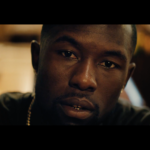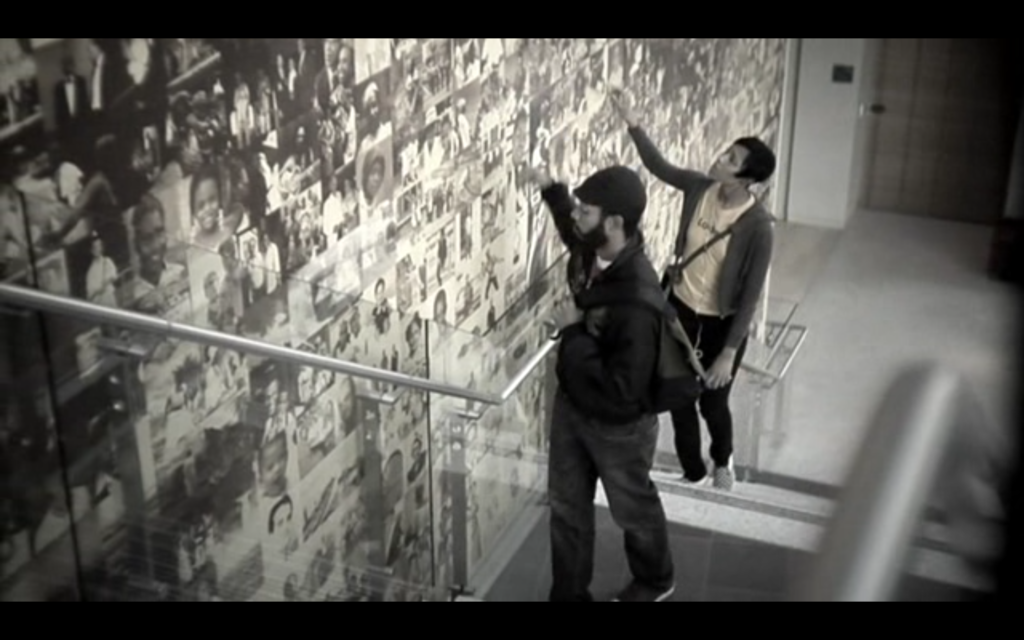
In the first of a week-long series celebrating the work of our 2020/21 Student Undergraduate Prize winners, Niki Radman reflects on her piece eye/contact, an audiovisual exploration of looking and eye contact in the cinema of Barry Jenkins.
I finished working on ‘eye/contact’ in December 2020, and had begun piecing together the final cut about three weeks earlier. Over the previous few months, I had been working on smaller video essays for the ‘Audiovisual Film and Television Criticism’ course, led by Dr Ian Garwood. But the beginnings of ‘eye/contact’, which I submitted as the practical component for this course, far predated my knowledge of different video essaying methods and assumptions behind creating audiovisual criticism. Sometime in 2016, at the Prince Charles Cinema, I watched the credits roll on Moonlight (2016, Barry Jenkins) and found myself wanting to see it again, then and there. (In the absence of this possibility, I tried to stay awake through 2001: A Space Odyssey.)
The scenes I remembered most vividly after that first viewing were Juan (Mahershala Ali) and Teresa’s (Janelle Monáe) initial interactions with Chiron/Little (Alex Hibbert). Over approximately seven minutes of screen time Juan and his girlfriend attempt to coax some words out of the silent boy who averts his eyes. The couple’s voices are gentle, periods of awkward silence are softened by calm camera movements and warm lighting. But what really struck me were Juan and Teresa’s eyes, their ways of looking, accentuated by the tranquil cinematography. I couldn’t put my finger on why their patient, persistent gazes stayed with me for so long. But it did make sense to me when, later that same year, I read an IndieWire article in which Barry Jenkins and Yesi Ramirez, Moonlight’s casting director, recollect that the three actors they picked to play Chiron in the movie shared a certain quality of looking. “It was in his eyes”.
When I started work on my video essay project four years later, I wanted it to be about Moonlight and Wong Kar-Wai’s In The Mood for Love (2000). On the lookout for more ideas, I finally took the time to watch Jenkins’ other feature films, Medicine for Melancholy (2009) and If Beale Street Could Talk (2018). About a month before submission, I had a minute-long edit, which consisted solely of people in Barry Jenkins’ movies looking at each other, and no discernible critical argument. But the more I watched and re-arranged footage in my editing timeline, the more it seemed like Medicine for Melancholy and Moonlight might have something to say alongside and about each other.
I had always planned for my essay to contain a verbalized argument, either in the form of a voice-over or through passages of my own writing embedded into different scenes. But as I tried to build a verbal critical framework, I found that there wasn’t anything I could say that the films, through my edit, couldn’t say much more fully themselves. Ironically, it was fairly late in the process that I realised letting the works themselves do much of the ‘talking’ – or, more appropriately: looking – would not only take advantage of the unique formal abilities of the audio-visual essay but that this would also go right to the heart of what Moonlight – and, later, Medicine for Melancholy – had been communicating to me from the start: that you can quite easily speak without speaking. And that words are not always enough. Which, incidentally, can be a difficult conclusion for a student of English Literature to come to. But it was the only one that really made sense.

About Niki Radman
Niki Radman is a Master’s student in English Literature at the University of Glasgow, having completed her undergraduate degree in English Literature and Film & Television Studies. Originally from Austria, she has been based in the UK for five years. At the moment, she is particularly interested in affect, digital lives, translation, mental health, and contemporary literature. She has been creating video essays since 2020.
About this Series
This piece is part of a series celebrating and showcasing the work of the 2020/21 Student Undergraduate Prize winners at the School of Culture and Creative Arts, awarded in recognition of excellence in the diverse and innovative modes of assessment our School offers. Their work captured experiences common to many of us over the last year or so, and inspired us as they explored new ways to be creative with their assessments. Strong themes that come through in these winning entries are isolation, emotions which touch on trauma, and the power of communication.



